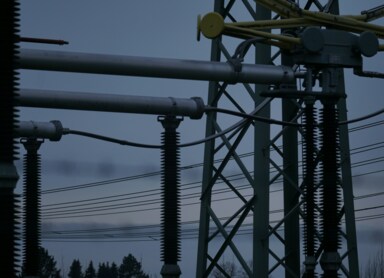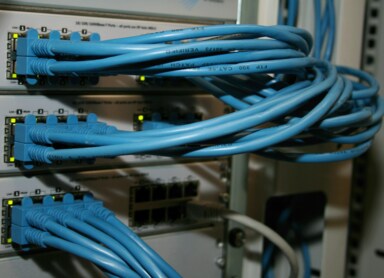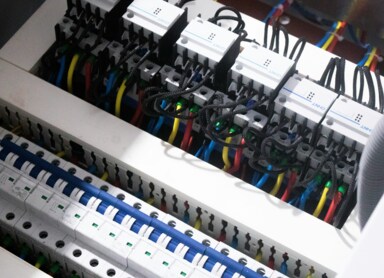What is energy efficiency? We explain!
Saving energy and investing in alternative energy sources are not the only ways to improve business profitability. What constitutes the term energy efficiency? How do I read a building's energy label?
Energy efficiency - definition and meaning
Maintaining thermal comfort in a building facility requires energy input. The more energy it takes to maintain thermal comfort, the lower the energy efficiency will be. So when we use the term 'high energy efficiency', we are actually talking about savings. The fewer resources it takes to heat a company's premises, the lower the business costs.
However, improving energy efficiency is not just about making a business more profitable. It is also the basis for obtaining a white certificate issued by the President of the Energy Regulatory Authority. It is a formal confirmation of saving a specific amount of energy, which can be monetised on the Polish Power Exchange. Application for the certificate must be preceded by an energy audit and an indication of the work the company wishes to carry out.
Energy efficiency indicator - calculation and interpretation
The rules for calculating the energy efficiency of a building are set out in the Regulation of the Minister of Infrastructure and Development on the methodology for determining the energy performance of a building or part of a building and energy performance certificates1. The basic principles for calculating efficiency include:
- the division of the building or part of it into heated and unheated spaces and zones;
- determination of indicators for annual energy demand - non-renewable primary, final and use energy.
Different technological solutions used are given different weights, with the lower the weight, the worse the energy efficiency will ultimately be. The type of heat source can be given as an example. Coal-fired boilers manufactured before 1980 have a value of 0.60. Low-temperature boilers, on the other hand, have a value of 0.87 to 0.94, but heat pumps of the direct evaporation in the ground/direct condensation type in a surface heating system, compressor-driven, electrically driven already have a value of 4.0.
As part of the audit, a calculation is carried out by an authorised person, the result of which is included in the energy certificate. This is a four-page document with an officially fixed template containing data such as:
- certificate number;
- building data;
- period of validity;
- energy performance assessment of the building;
- basic technical-utility parameters of the building;
- Indices of useful, final and non-renewable primary energy demand;
- recommendations for the cost-effective and technically feasible improvement of the energy
- performance of the building;
- details of the person drawing up the certificate.
It is important to note that the certificate cannot be drawn up according to an arbitrary scheme and that the calculation of the various parameters is precisely defined. The cost of an energy certificate depends on many factors. The cheapest are audits of flats and single-family houses. In the case of commercial buildings, you have to reckon with an expense of about 1 000 PLN or more.
The energy label - how to read and interpret it?
For a company's management, which makes decisions on individual investments - including those to increase the efficiency of the company's operations - the energy efficiency label is of primary importance. This is a coloured, horizontal scale located at the bottom of the first page of the certificate. It consists of two parallel bars. The top one reflects the condition of the building being assessed.
The lower one specifies the requirements for the new building. On both scales there is a scale indicating the annual non-renewable primary energy requirement. The developer's assumption should be that the indicator on the scale is shifted as far to the left as possible. The darker the shade of green the marker is on, the more economical the use of the facility. The further to the right the arrow is tilted, the higher the energy demand and the building itself, the less energy efficient.
According to the legislator's announcement, it can be expected that the unintuitive 'slider' will be replaced by a letter marking scale from A to G+ similarly to what can be seen, for example, on household appliances. It is worth mentioning that a similar method of letter labelling has already been used successfully in the UK, among others.
Register of energy efficiency certificates - role and functions
The obligation to maintain a register of energy efficiency certificates stems directly from the provisions of the Energy Performance of Buildings Act2. The entity responsible for maintaining the ICT infrastructure is the Minister of Development and Technology.
Access to the central register is fully public. The database is primarily intended to create a coherent system for assessing the energy efficiency of buildings in Poland. It also makes it possible to verify the entitlement of authorised persons to issue energy performance certificates and to inspect heating and air-conditioning systems.
How to improve energy efficiency? Practical tips and strategies
Ultimately, it is worth aiming for the energy efficiency of a building to be at the highest possible level. What measures can businesses take in this direction?
First and foremost, it is worth starting with employee education. Changing small daily habits can contribute to significant savings on a day-to-day basis. It is worth remembering to switch off electronic devices instead of leaving them on standby, to switch off lights when leaving a room or to close windows when running radiators in the winter season.
Another strategy is to thermally insulate the building, or to thermally retrofit it. By sealing the insulation layer, less thermal energy escapes to the outside of the building, which in turn reduces the amount of energy needed to heat it. Depending on your budget, it is also worth considering the location of thermal bridges, which are generally located around doors and windows. Such an examination is carried out using a thermal imaging camera.
A further step is to use renewable energy sources . Companies can count on subsidies for photovoltaics and heat pumps. Such systems should be combined with energy storage and EMS/HEMS (energy management system) software. This software is designed to optimise electricity consumption. Companies using a fleet can further improve their energy efficiency by installing carports and investing in electric cars with the My Electrician programme.
Still another way to improve efficiency is to change electricity retailer to a company that offers lower prices, a guarantee of fixed charges or tariffs tailored to the business model in which the company operates.
Before implementing any measures to improve the energy efficiency of a building, it is worth commissioning an energy audit. This will determine the energy efficiency of the building and recommend actions to be taken to improve it.
Improving energy efficiency - just like the green transition - is worth planning for over the long term. It is clear that few companies can afford a huge, one-off expenditure. The sum of small steps, however, will yield a much greater benefit. Start modernising your business with us today. Get in touch with our specialists, who will help you design your ideal growth strategy.
1. https://isap.sejm.gov.pl/isap.nsf/DocDetails.xsp?id=WDU20230000697
2. https://isap.sejm.gov.pl/isap.nsf/DocDetails.xsp?id=wdu20140001200






